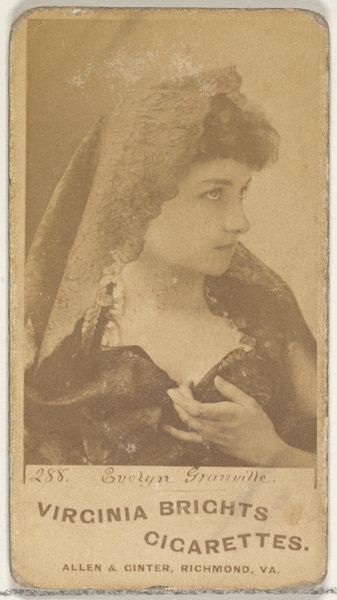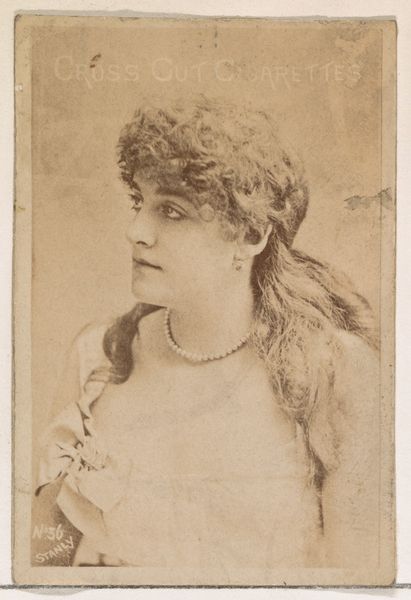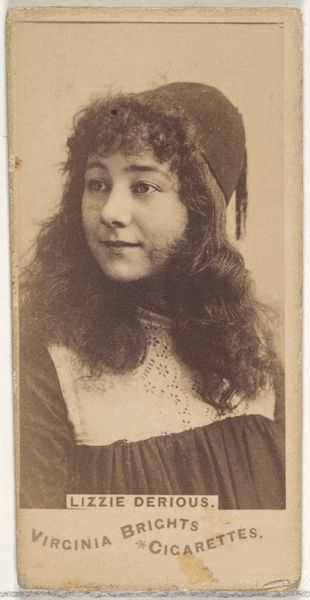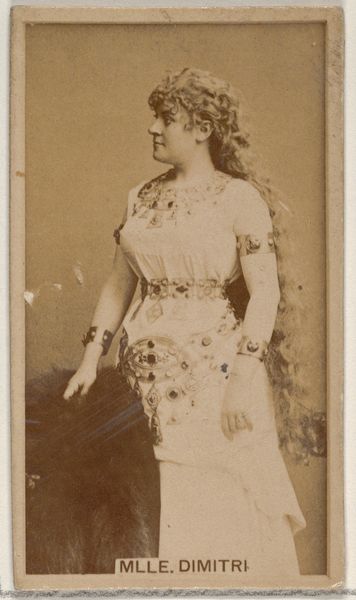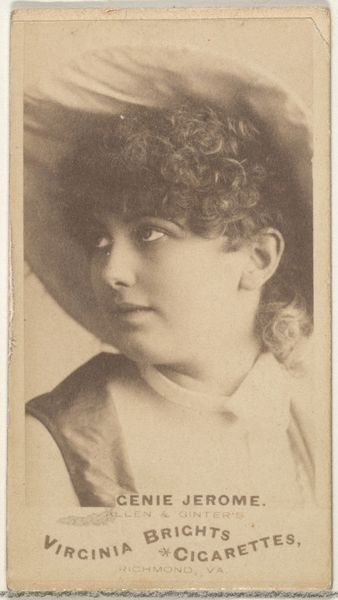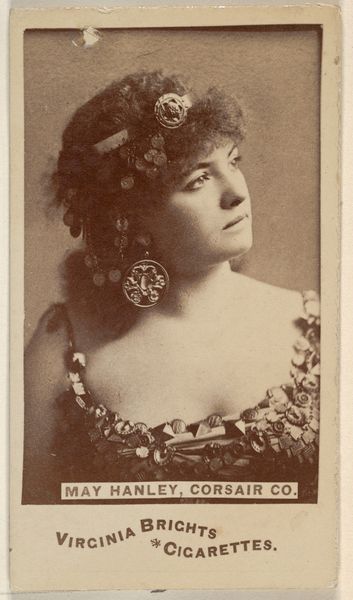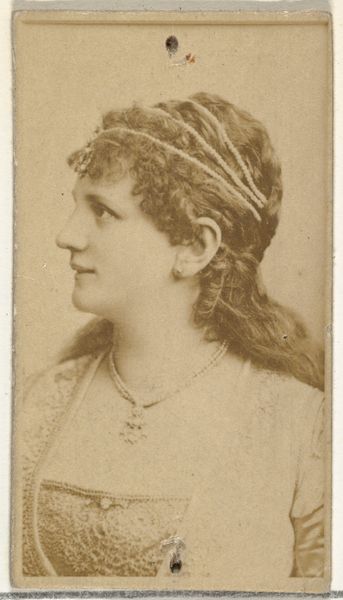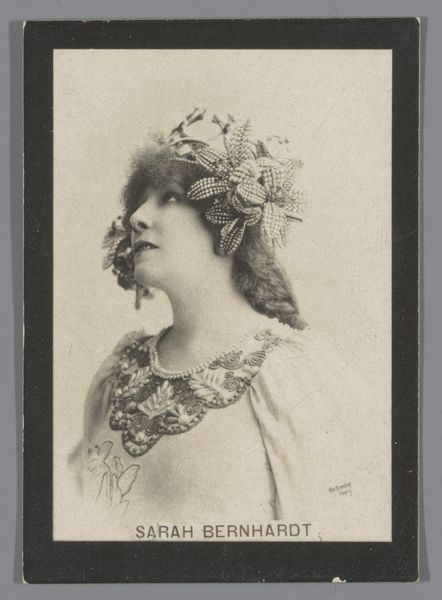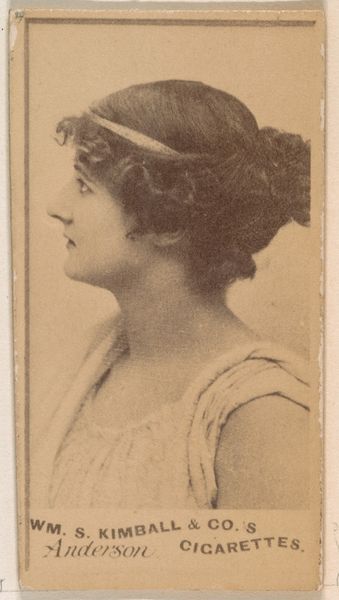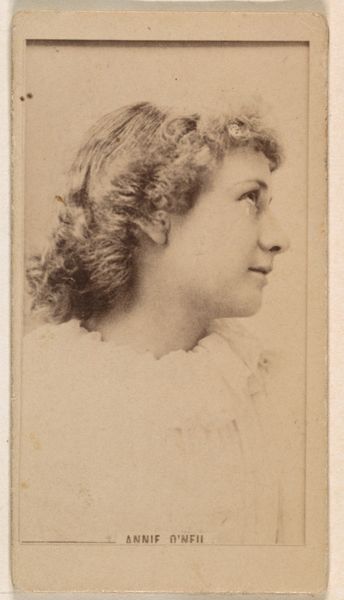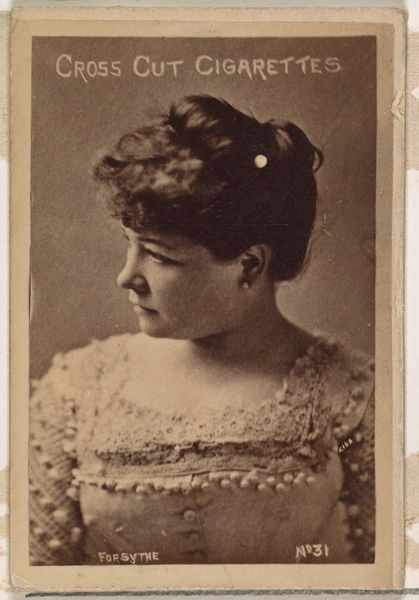
Sylvia Grey, from the Actresses series (N246), Type 2, issued by Kinney Brothers to promote Sporting Extra Cigarettes 1888 - 1892
0:00
0:00
drawing, print, photography, albumen-print
#
portrait
#
drawing
#
toned paper
# print
#
photography
#
19th century
#
genre-painting
#
albumen-print
Dimensions: Sheet: 3 1/16 × 2 7/8 in. (7.7 × 7.3 cm)
Copyright: Public Domain
Curator: Here we have an albumen print titled "Sylvia Grey, from the Actresses series (N246), Type 2," made sometime between 1888 and 1892 by Kinney Brothers Tobacco Company. Editor: Oh, she looks like she's escaped from a dream! The sepia tone gives her such a vintage air, almost as if she’s a ghost captured in time. Curator: Indeed! This was part of a series distributed with Sporting Extra Cigarettes, a clever marketing strategy leveraging popular actresses to boost consumption. The albumen print process itself is interesting, involving layers of egg white and silver nitrate to achieve that soft, almost ethereal quality. We can also think about the materiality of photographs within the context of consumerism and how items like these were received by a wide audience of both genders, beyond what would be normally conceived for high art. Editor: The chain with the hanging coins on her head is so fetching, as is that huge feather—or what looks to be a feather—fixed to it. Makes me wonder, what role did Sylvia Grey play on stage? Did it have anything to do with orientalist fantasies so popular back then? Her delicate costume certainly alludes to something beyond the ordinary. Curator: That’s right. The choice to depict actresses in what we can call, in hindsight, appropriative attire catered to contemporary fascinations, playing into existing orientalist trends, whilst simultaneously turning labor – that of the actresses, and of those making the photograph – into the commodity of the photograph itself. The print wasn't just a portrait but a commodity embedded within a wider economic system. Editor: Absolutely, and it all serves to both exoticize and objectify her. But regardless, it doesn’t stop my imagination running wild… what stories did she bring to life? What emotions did she provoke in audiences? Curator: Exactly. This photograph is a powerful visual representation that speaks volumes about consumption and labor, about marketing techniques and orientalism in the late 19th century, inviting a critical perspective on art as a reflection of economic forces. Editor: I suppose these small objects had far more implications and reach than it may seem.
Comments
No comments
Be the first to comment and join the conversation on the ultimate creative platform.

